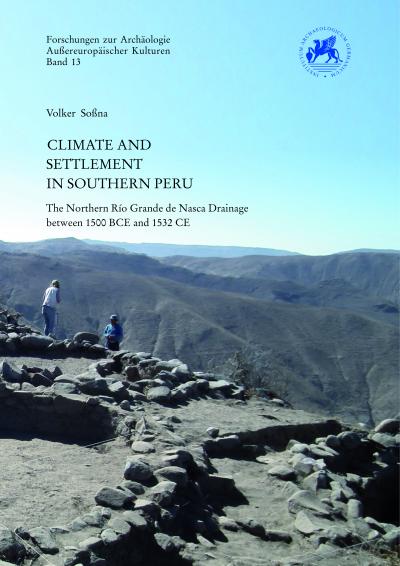Climate and settlement in Southern Peru: The Northern Río Grande de Nasca drainage between 1500 BCE and 1532 CE
https://doi.org/10.34780/e4b0-b3e6
Synopsis
The cultures thriving during the course of the millennia on the arid Peruvian South Coast between the valleys of Chincha and Yauca had a crucial impact on the history of the Central Andes in general. Important local cultures such as Paracas (ca. 800 – 250 BCE) and Nasca (ca. 250 BCE – 650 CE) are well known for rock carvings and ground drawings, but also for the extraordinary skills of their craftsmen in producing high-quality textiles and ceramics. The region also played a vital role in the formation and expansion of the pan-Andean empires of the Wari (ca. 650 – 1000 CE) and the Inca (ca.1470 – 1532 CE).
Despite the South Coast´s importance, relatively little is known about its settlement history. Thanks to a long-term archaeological project of the German Archaeological Institute, detailed data are now available for the northern part of the Río Grande de Nasca drainage, a region well suited for a case study due to the abundance of comparatively well preserved archaeological remains. Based on these data 3,000 years of settlement history are being reconstructed in this volume.
The settlement patterns of ten successive cultural phases show substantial changes in terms of settlement hierarchies and population development. Furthermore, the foci of settlement shifted. Due to the arid conditions in this region already minor fluctuations in absolute amounts and intra-annual distribution of precipitation have a significant impact on the agricultural potential. The question is therefore pursued whether past climate fluctuations may have been the principal trigger for changes in settlement behavior.
For this purpose, analyses of archaeological data are compared to studies on climate history which suggest significant changes in precipitation patterns. Temporal correlations between important developments in settlement and climate could indicate a causal relation between both phenomena. While the limited and uneven resolution of the data impedes a definite assessment, the general trend seems to suggest that this was actually the case during some specific periods. The majority of major settlement shifts and demographic instabilities, however, do not temporally correlate with clearly traceable changes in climate.
Chapters
-
Foreword
-
Preliminary Note
-
Acknowledgements
-
General Notes
-
1 Introduction
-
2 Nature
-
3 Culture
-
4 Culture Meets Nature
-
5 Archaeological Settlement Data – Acquisition, Classification, and Analytical Methods
-
6 Results: Diachrone Settlement Pattern, 1500 BCE–1532 C.E
-
7 Discussion: Settlement, Migration, and Climate Change
-
8 Conclusions: The Impact of Climate Change on Settlement Behavior
-
Abstract
-
Resum
-
Zusammenfassung
-
List of Figures
-
List of Tables
-
List of Maps
-
Glossary: Terms of Spanish and Quechua Origin
-
List of Abbreviations
-
References
-
Content of Supplement DVD




